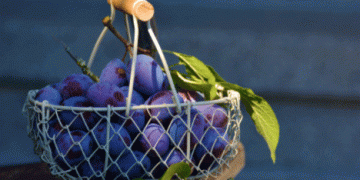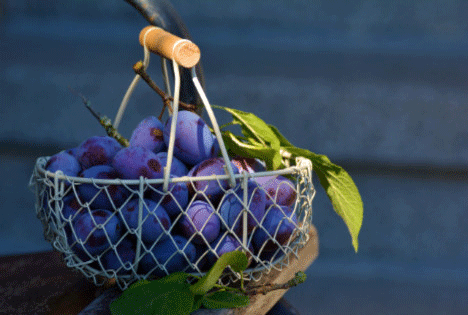As the late summer sun ripens the orchards, the plum and pear harvest in Lower Saxony is in full swing. The sweet, juicy plums and tart zwetschgen (a variety of European plum) are currently in abundance at farm shops, local markets, and supermarkets across the region. Claus Schliecker, Chair of the Fruit Farming Group at Landvolk Niedersachsen, encourages consumers to take advantage of the fresh harvest, which will continue until the end of September. Despite a smaller yield this year, an unexpected slowdown in sales means there is still plenty of fruit available.
The plum harvest began in mid-July, with plums and zwetschgen making up about 2% of the orchard land along the Niederelbe region. “The high summer temperatures have helped the fruit mature beautifully, making them taste exceptional,” said Dr. Matthias Görgens, Deputy Director of the Fruit Research Institute in Jork. Harvesting started two weeks earlier than usual due to the warmer weather, with varieties like the popular ‘Doppelte Hauszwetsche’ now being picked.
Once a dominant crop in the region, plums and zwetschgen once occupied a quarter of the Alte Land (Old Country) orchards. However, over the years, the region has shifted focus, with about 90% of the area now dedicated to apple production. In total, approximately 9,150 hectares of orchard land are cultivated along the Niederelbe, mostly for apples.
However, there is a rising interest in pear cultivation, which is experiencing a renaissance in the region. According to Görgens, farmers are increasingly planting new pear orchards. In 2024, they expect to harvest around 9,000 tons of pears, which are now grown on roughly 3% of the region’s orchards. Pear varieties like Conference, Alexander Lukas, and Xenia are popular for fresh consumption, and the changing climate is contributing to their success.
“The pear requires more warmth than apples to ripen fully,” explains Görgens, adding that rising average temperatures due to climate change are creating better growing conditions for pears in northern Germany. Just a few years ago, the region could only support smaller cooking pears, with larger varieties imported from southern Europe. But with changing consumer habits favoring fresh fruit over traditional dishes like pears, beans, and bacon, pear farming is making a comeback.
Farmers in Lower Saxony are also experimenting with new varieties, including red-fleshed pears that stand out in the marketplace. The innovative spirit of local growers is helping the region adapt to a changing climate while also diversifying their production beyond apples.
As the pear and plum harvests continue through the end of September, growers are optimistic about the future. Their ability to adapt to both consumer trends and climate changes is ensuring that Lower Saxony remains a vibrant and productive hub of fruit farming in Germany.

































